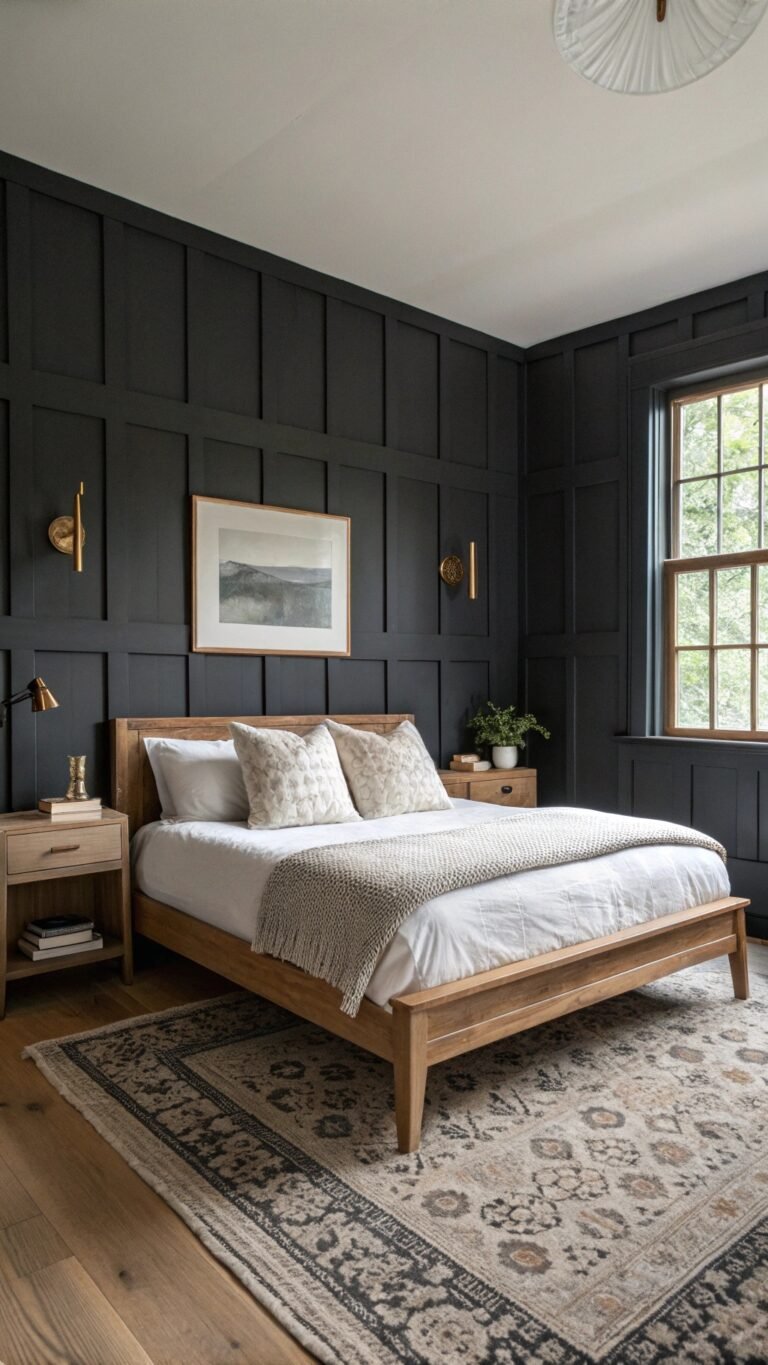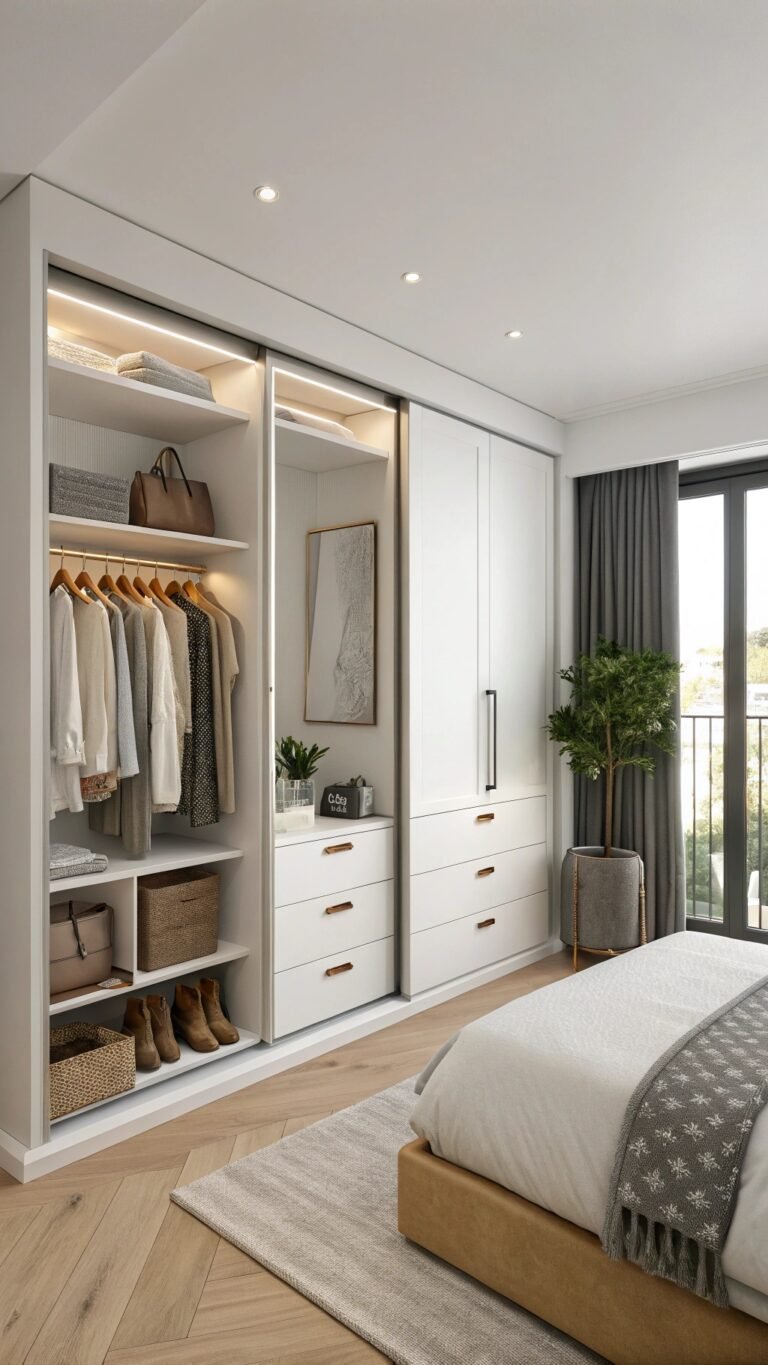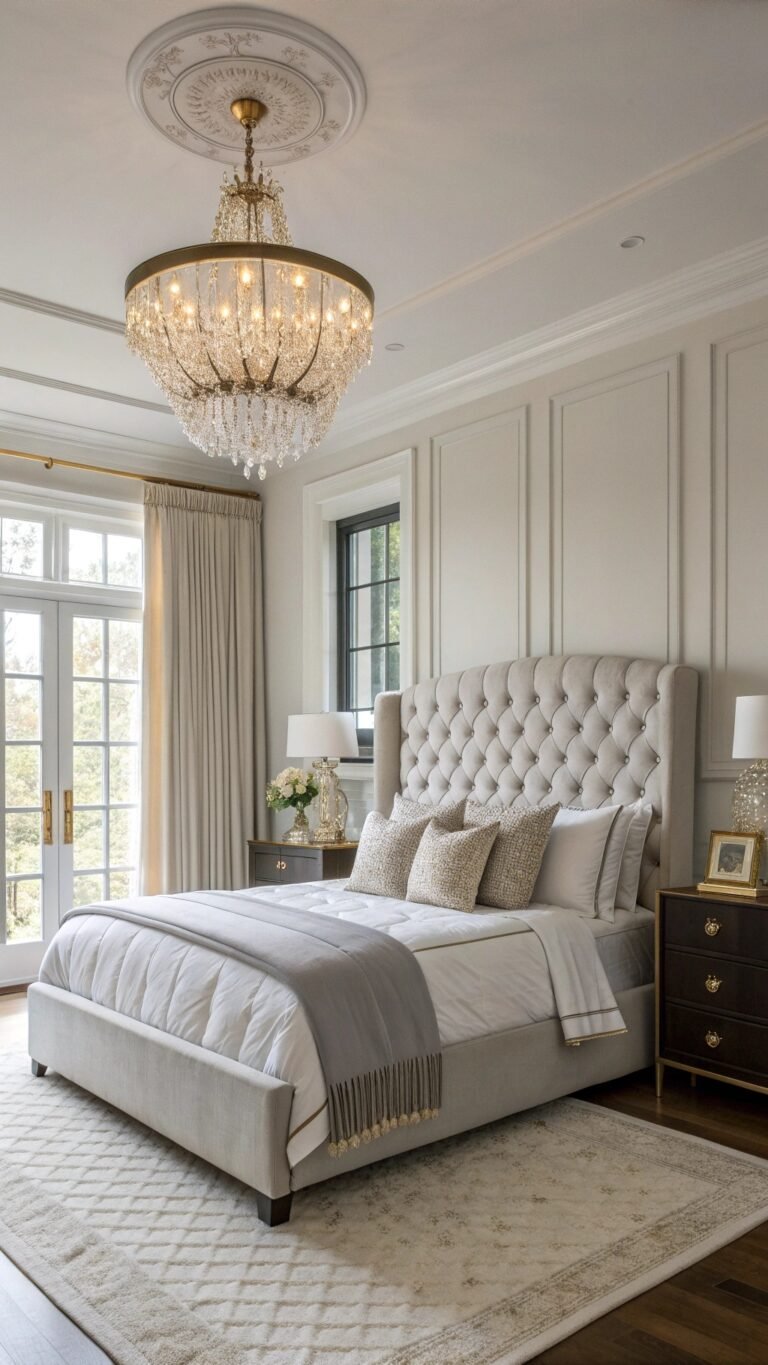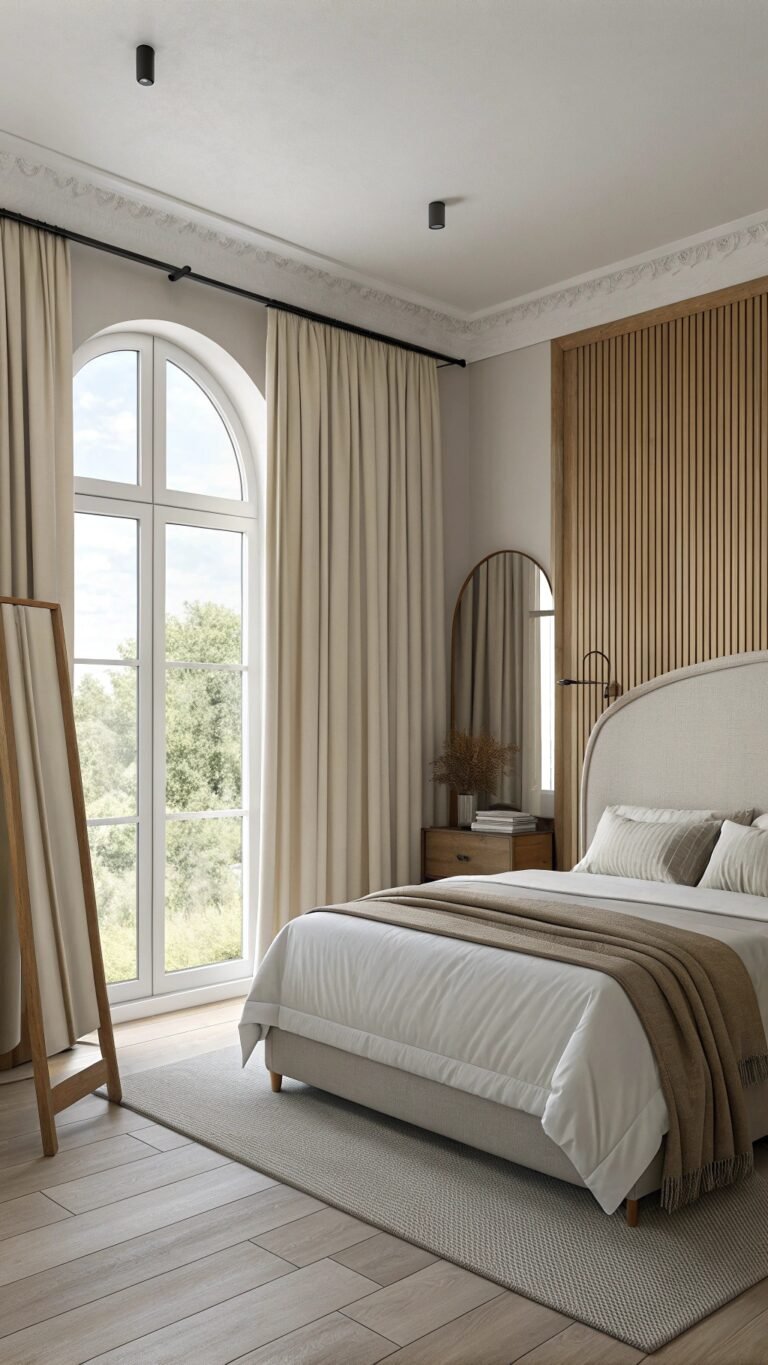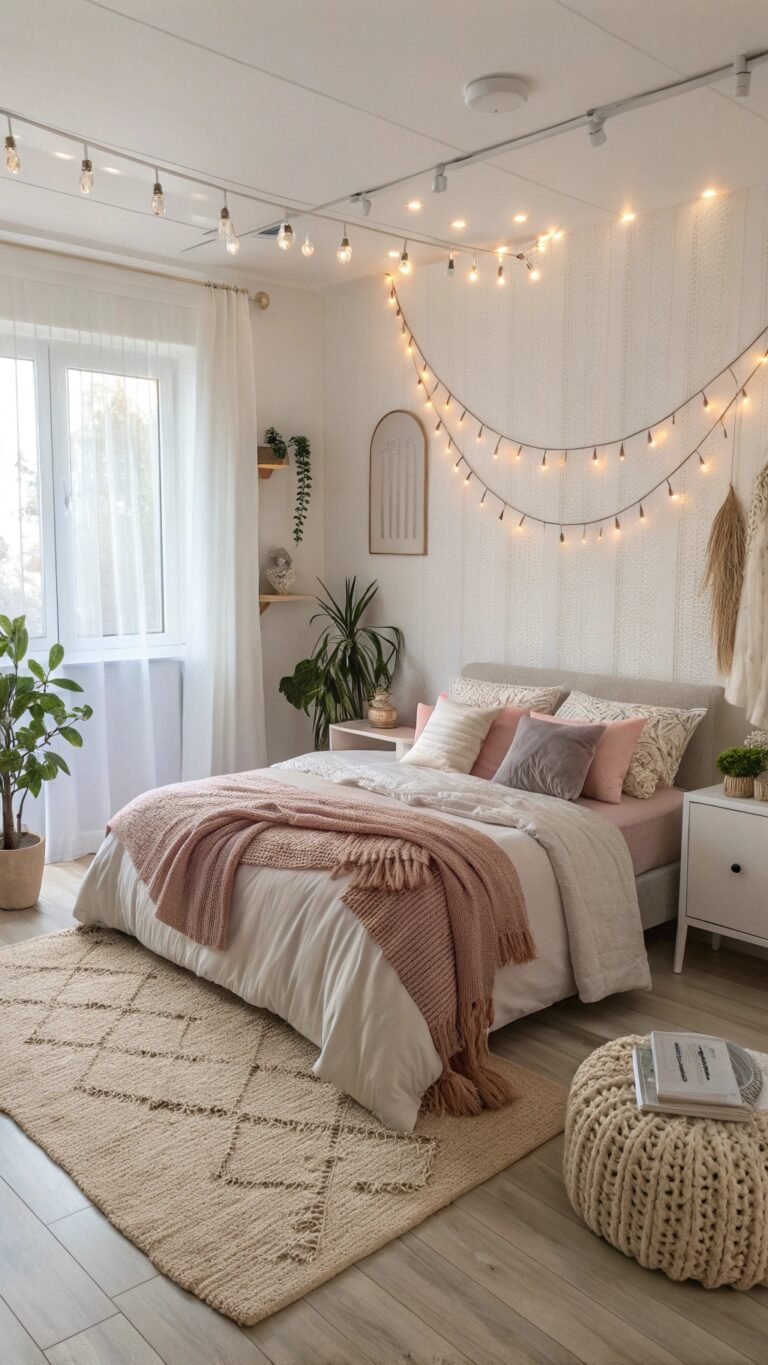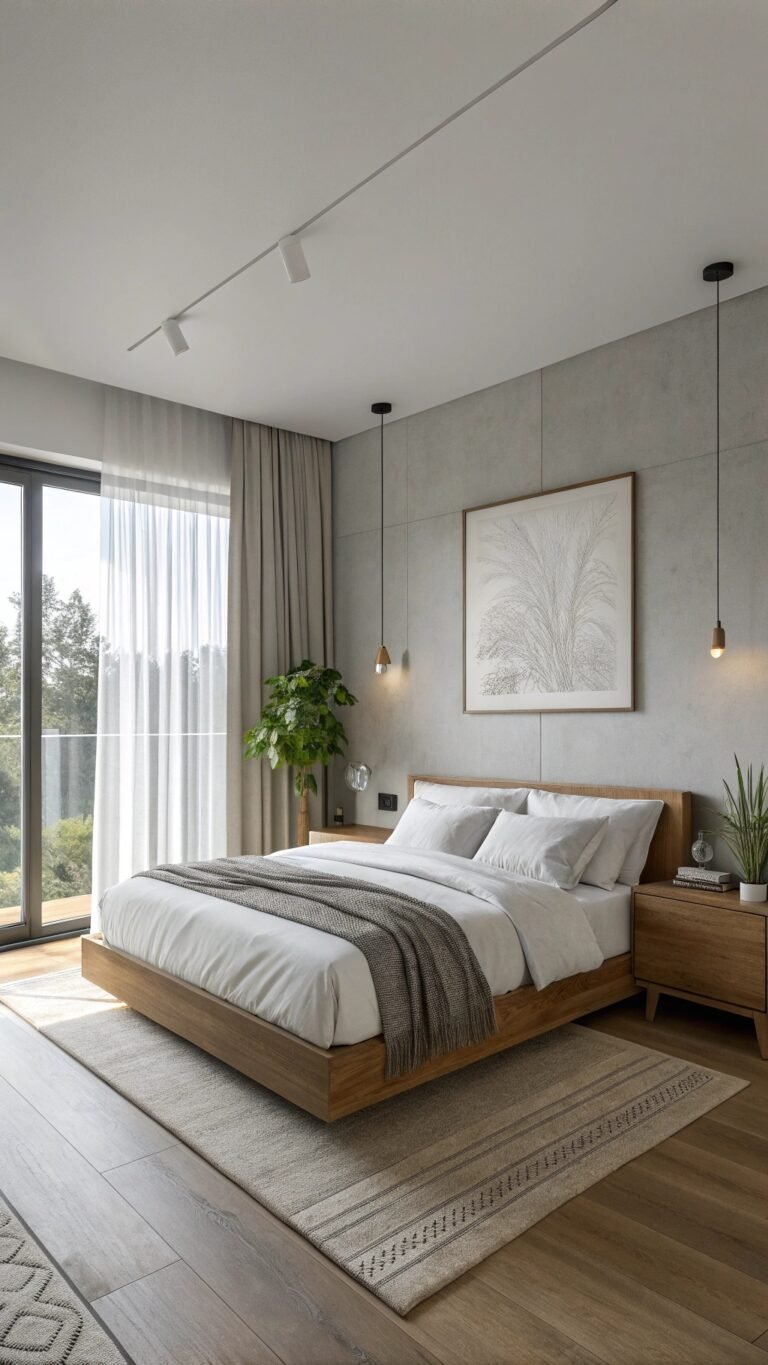Room Decor Bedroom: 13 Ideas That Turn Sleep Spaces Into Standout Sanctuaries
Room decor bedroom ideas are trending because small, strategic changes—lighting, textiles, color, and storage—deliver a big visual payoff without a remodel.
Designers are leaning into layered textures, calming palettes, and mood-first lighting that photographs beautifully and actually supports rest. Try one headline move, add two subtle tweaks, and your bedroom will feel brand new.
1) Cozy Neutral Layers
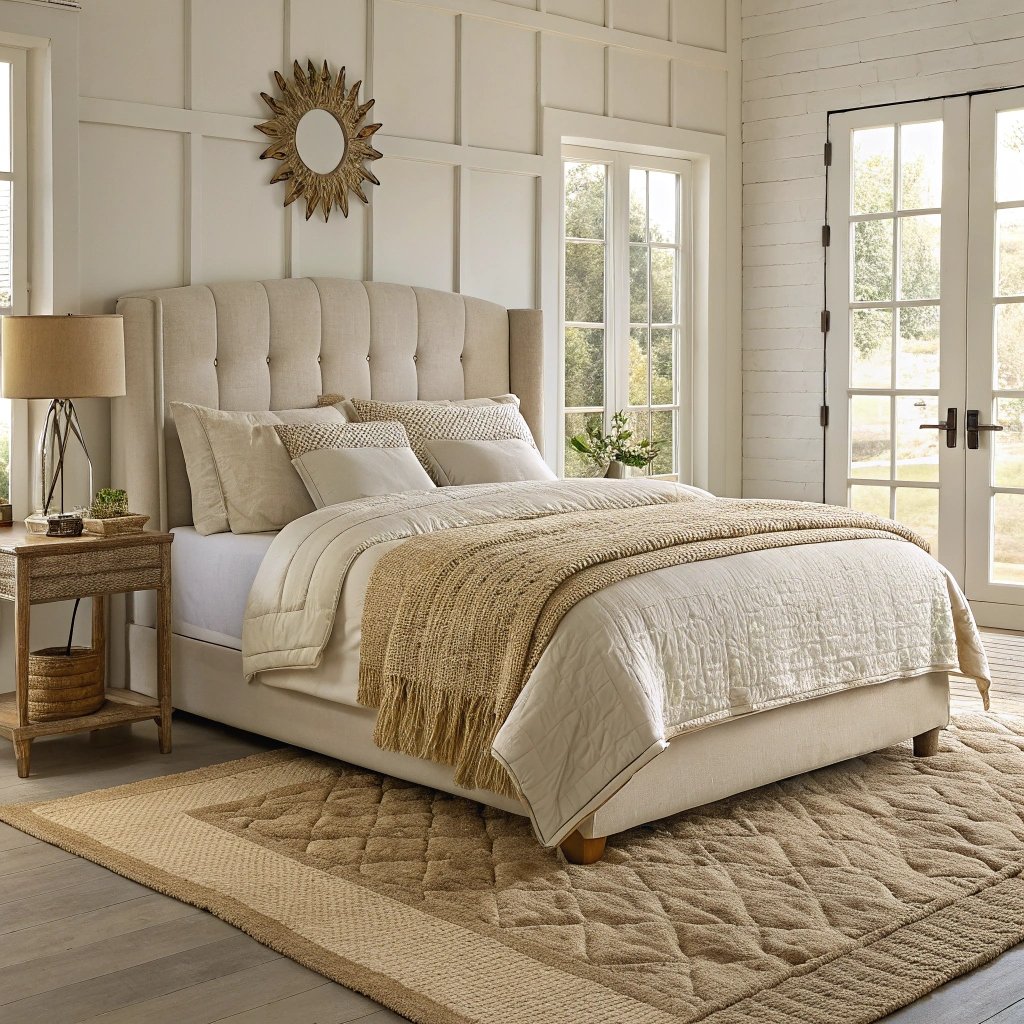
Soft neutrals calm the room and streamline decisions. Build from the bed out: natural linen duvet, textured throw, oversized euro pillows, and a wool or jute rug that frames the footprint.
Choose a padded headboard to soften acoustics and add a small bench or pouf to create a landing zone for blankets. Keep furniture lines simple so texture does the heavy lifting.
What makes something unique:
Vary the finishes within the same palette—stone, sand, bone—to prevent flatness. Add a matte plaster or limewash wall behind the bed for depth without pattern, and swap shiny metals for warm, low-sheen brass or bronze.
A single sculptural ceramic lamp acts as jewelry, delivering glow without visual clutter and elevating the neutral scheme into quiet luxury.
2) Color-Drenched Feature Wall
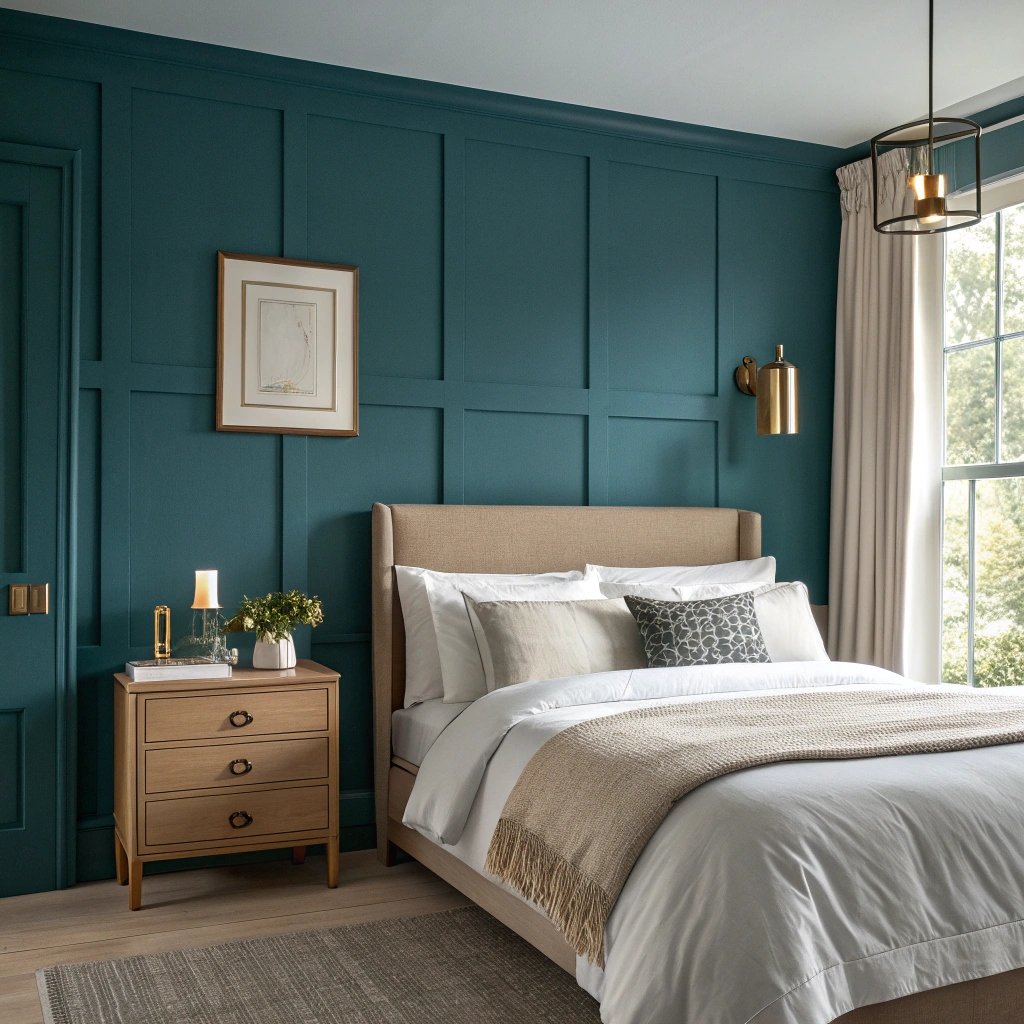
Wrap one wall—usually the headboard wall—in a saturated hue to anchor the room. Deep teal, earthy aubergine, or heritage green instantly adds personality and frames the bed as the focal point.
Keep the remaining walls light and let bedding and art echo small notes of the feature color for cohesion without overwhelming the space.
What makes something unique:
Play with sheen to create dimensional calm: matte on the wall, satin on the painted nightstands, and a slightly glossier color-matched frame for the artwork.
Ground the bold tone with warm woods and off-white linens. The monochrome moment hides visual noise on the wall while making everyday styling look curated and intentional.
3) Japandi Calm
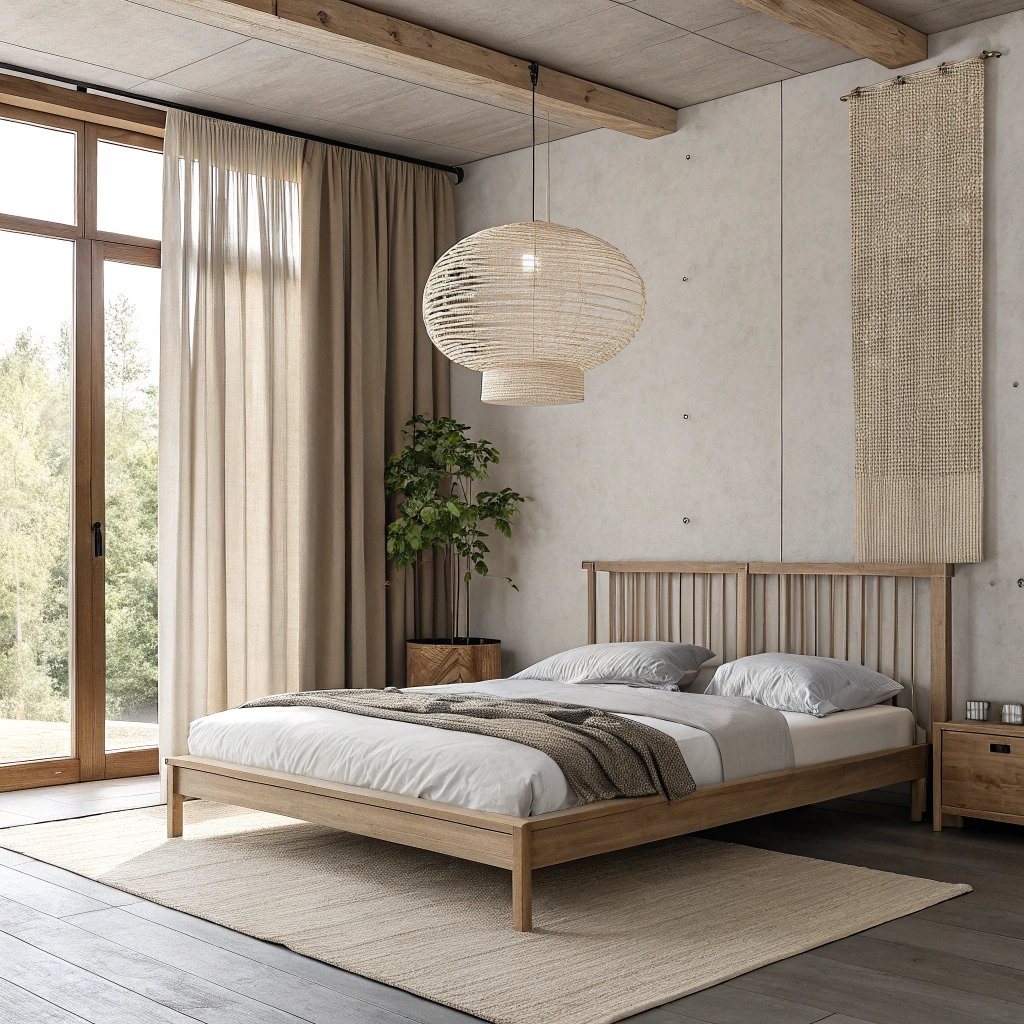
Blend Japanese restraint with Scandinavian warmth. Low, platform-style bed; pale wood nightstands; smooth plaster walls; and linen or cotton gauze curtains keep the look airy.
Negative space matters—leave room to breathe around furniture, and keep surfaces lightly styled with a stack of books and a single branch for quiet, organic movement.
What makes something unique:
Use gentle radiuses on corners, a paper-lantern style pendant at ~3000K for flattering light, and tactile finishes like ribbed ceramics or slatted wood behind the headboard.
The soft geometry and honest materials feel restful yet intentional, making this a decor approach that’s forgiving, timeless, and easy to maintain.
4) Statement Headboard & Wall Molding
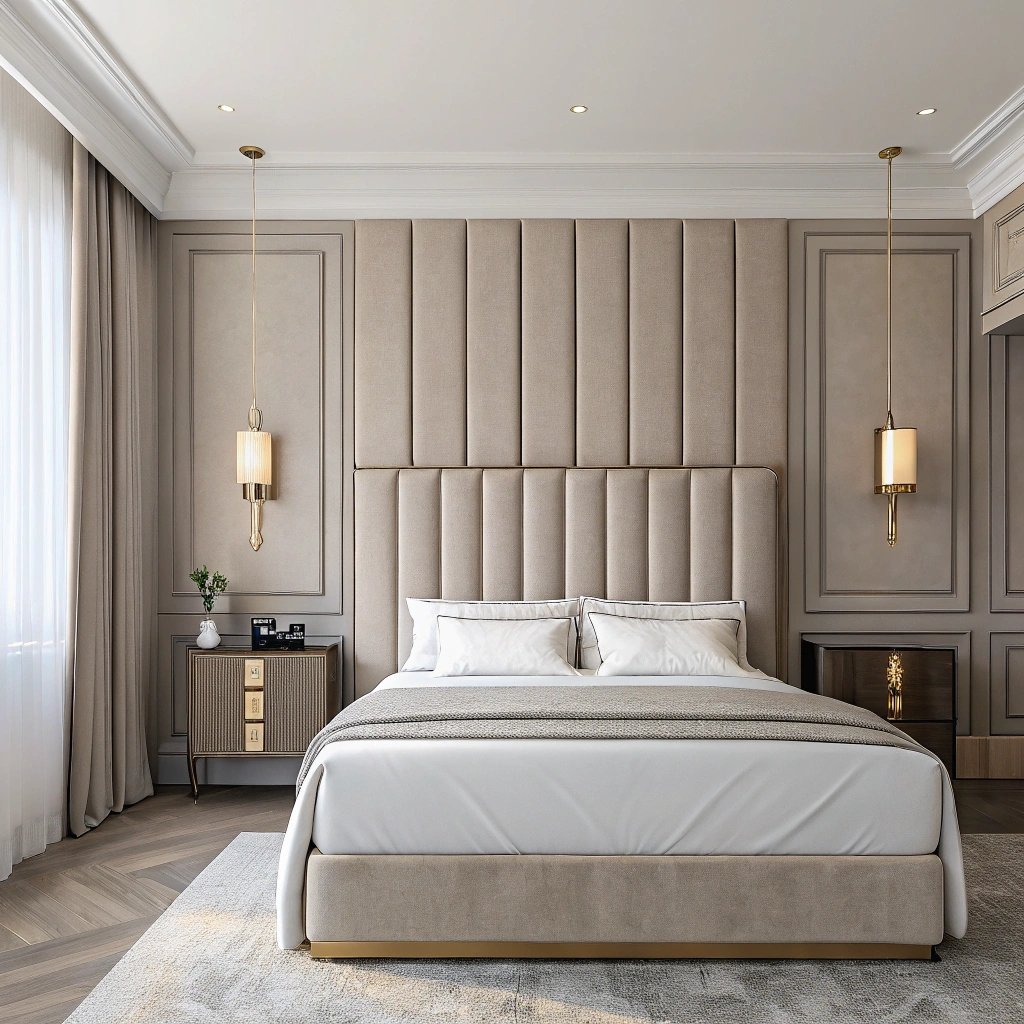
Create a custom look with an oversized headboard and simple applied molding. A channel-tufted or arched headboard adds instant architecture, while picture-frame molding painted to match the wall adds depth without pattern. Keep bedding simple to let the millwork and upholstery carry the visual story.
What makes something unique:
Color-match headboard fabric to the wall within one tone for a tailored “built-in” effect. Specify thin profiles on the molding for a modern read and align them to the bed width for symmetry.
This trick photographs like a luxury hotel suite while costing far less than full wall paneling.
5) Symmetry That Soothes
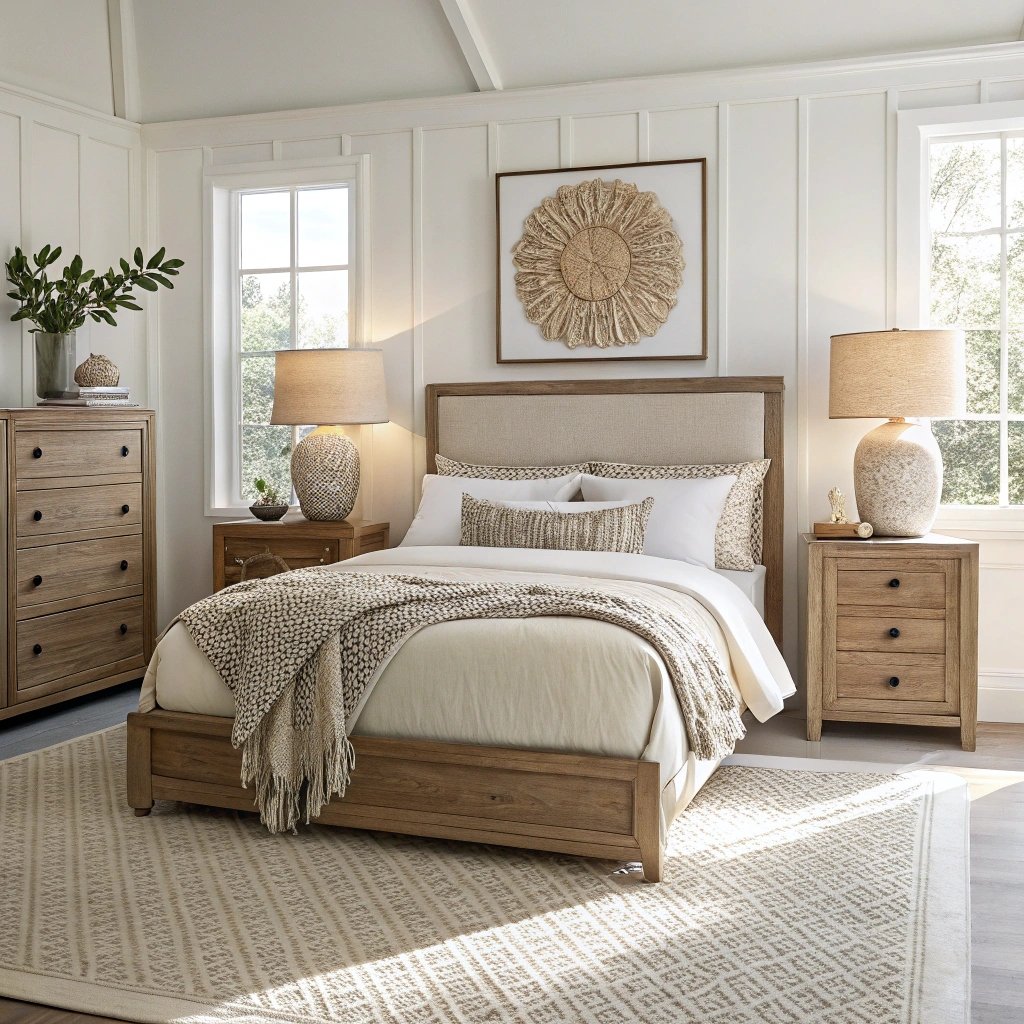
Place matching nightstands and lamps on either side of the bed to establish balance. Use identical pillows and a centered art piece to reinforce the axis.
Symmetry reduces visual chaos, especially in smaller rooms, and makes daily resets faster because every item has a mirrored partner and predictable home.
What makes something unique:
Break the strictness with a single asymmetrical element—a sculptural vase on one nightstand or a textured throw draped off-center.
Keep lamp shapes identical but vary finishes subtly, like matte ceramic bases with linen shades and brass finials. The result feels elevated: order meets personality.
6) Mixed Materials, One Palette
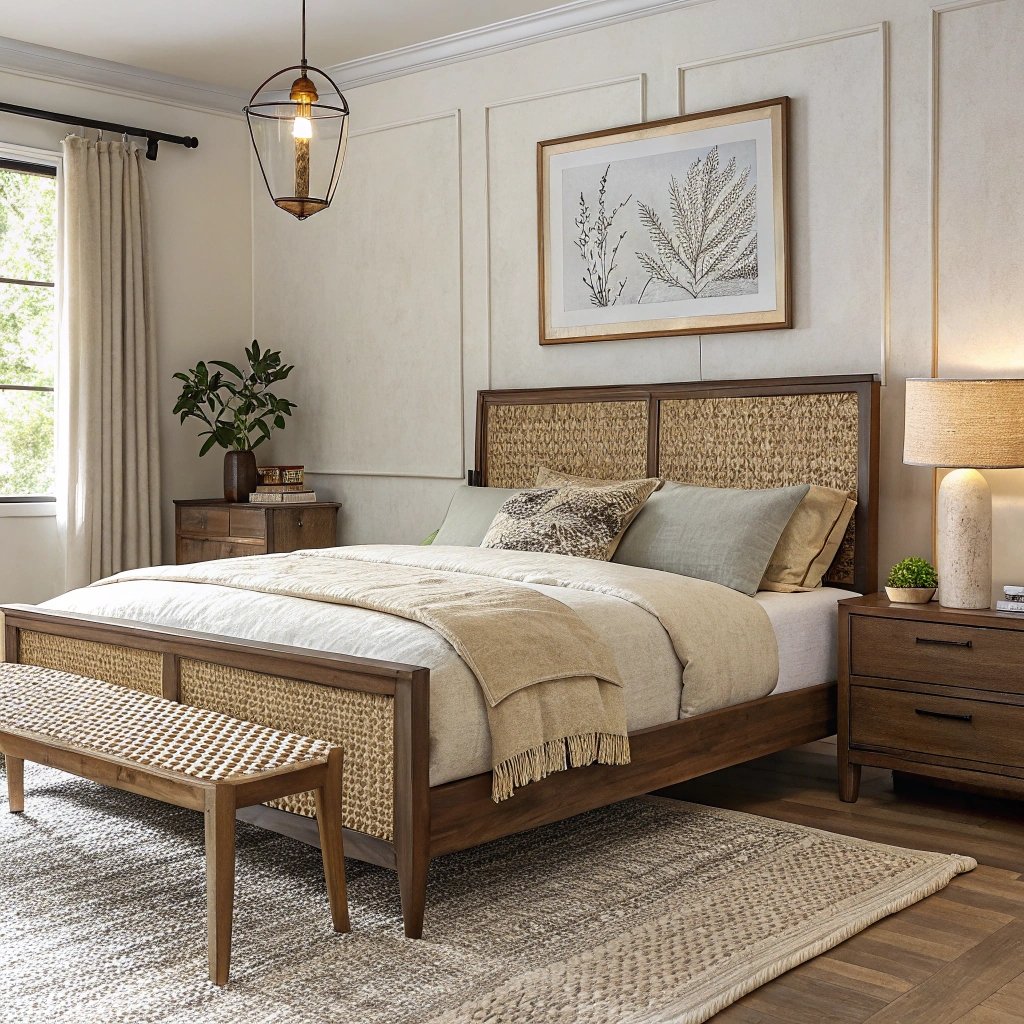
Combine wood, stone, metal, and soft textiles in a tight color range for depth without clutter. A walnut bed frame, travertine-topped nightstand, linen bedding, and aged brass hardware create a cohesive, touchable mix. Keep patterns minimal; let grain, weave, and patina provide the interest that lasts.
What makes something unique:
Echo materials in small doses across the room: a stone tray on the dresser, brass picture light, and a woven bench at the foot of the bed. When textures repeat intentionally, the space reads curated, not collected, making the room feel layered on day one and better over time.
7) Smart Storage Built-Ins
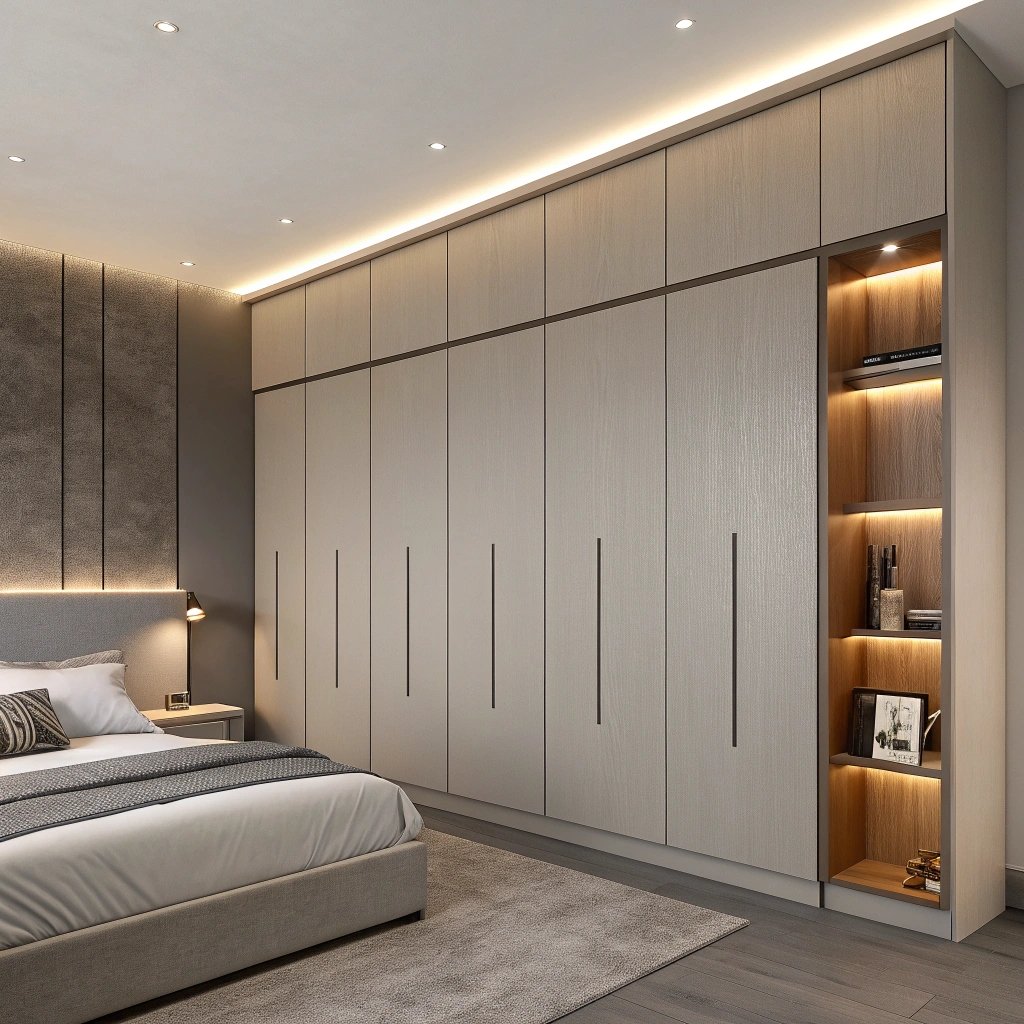
Turn blank walls into storage that disappears. Floor-to-ceiling wardrobes with integrated pulls and a shallow niche over the headboard corral clutter and free up floor space.
Inside, use double-hang rails, drawers with dividers, and pull-out trays for accessories. A color-matched facade lets the storage read as architecture, not bulk.
What makes something unique:
Add warm LED strips inside and a toe-kick light for night navigation. Include a “tomorrow rail” or valet hook near the door for outfit prep.
Hiding storage in plain sight maximizes square footage and keeps the visual field calm, perfect for bedrooms that multitask.
8) Art-Led Decor Rail
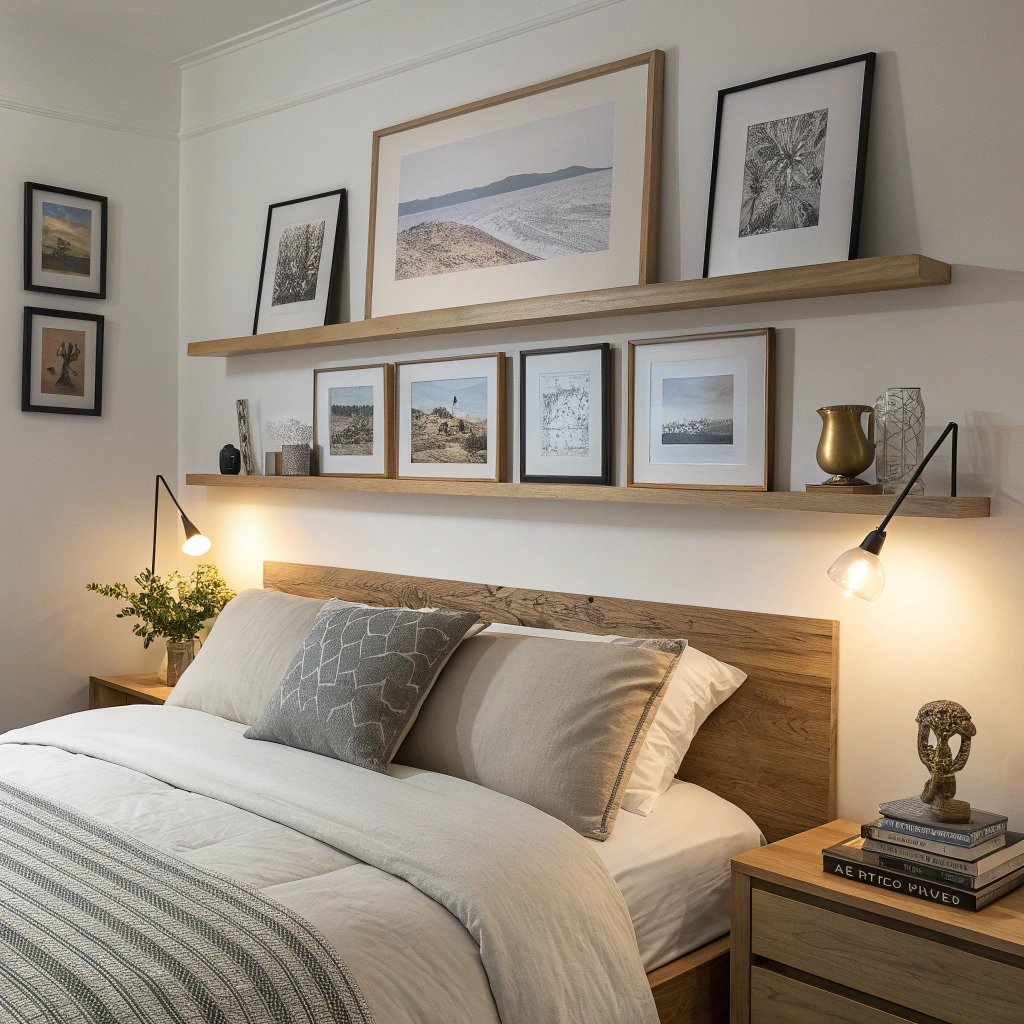
Install a slim ledge or gallery rail above the headboard to layer art, frames, and small objects. The horizontal line elongates the wall and allows easy seasonal swaps. Pair a large anchor piece with smaller prints and a single sculptural object. Keep colors in the same family for harmony.
What makes something unique:
Use wide, creamy mats and thin frames for a boutique feel, and mix a tactile element—linen pinboard or a fabric-covered panel—behind the rail to add depth.
Lighting a small picture light over the center creates a quiet focal point and evening glow, turning the bed wall into a curated vignette.
9) Biophilic Green Oasis
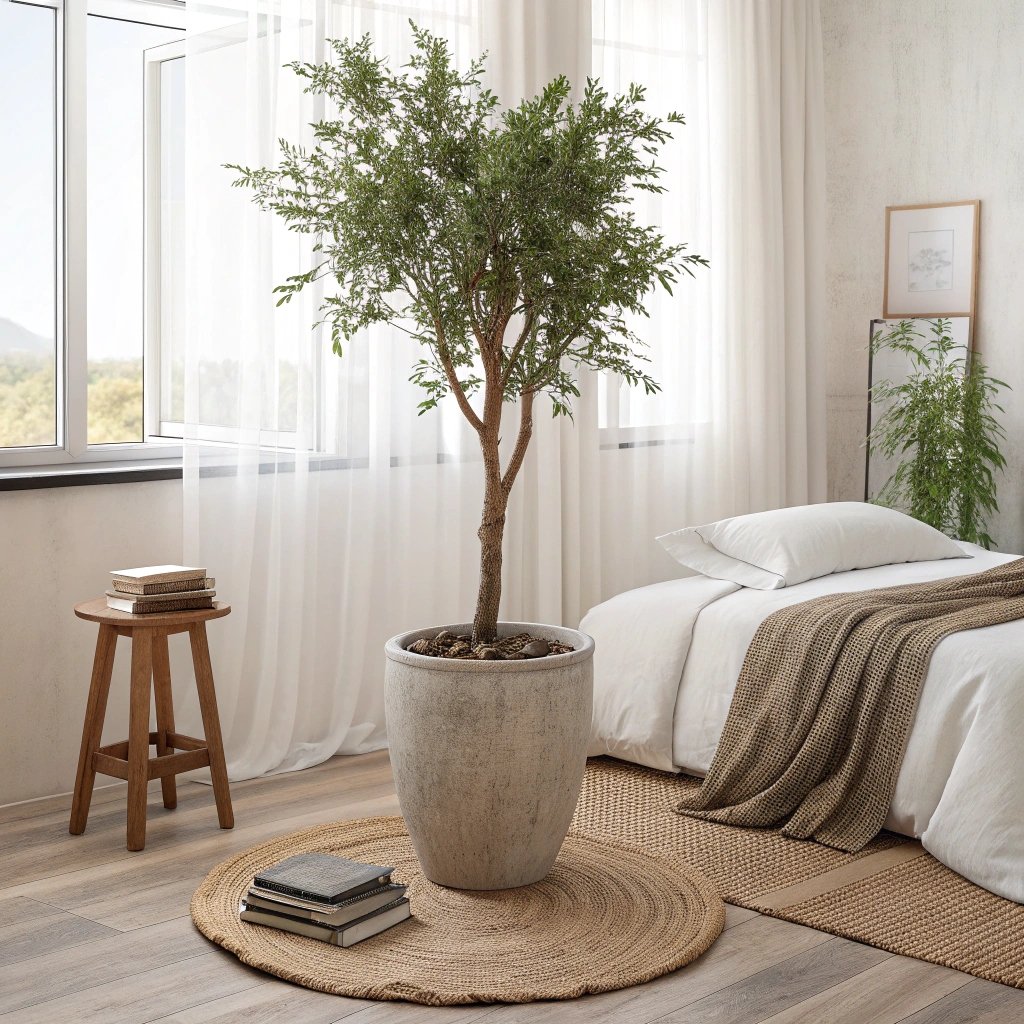
Plants soften edges, clean the air, and introduce organic shapes that relax the eye. Use one or two larger plants—olive tree or rubber plant—in simple planters rather than many small pots.
Complement greenery with natural fibers: linen drapery, wool throws, and a sisal or jute rug for gentle texture underfoot.
What makes something unique:
Diffuse light with sheer or ribbed glass to cast soft patterns across walls. Keep finishes matte so the greens read rich and lifelike.
A stone or wood stool next to the plant creates a micro-landscape that feels spa-like. The mix of texture, light, and foliage offers a daily reset.
10) Small Bedroom, Big Moves
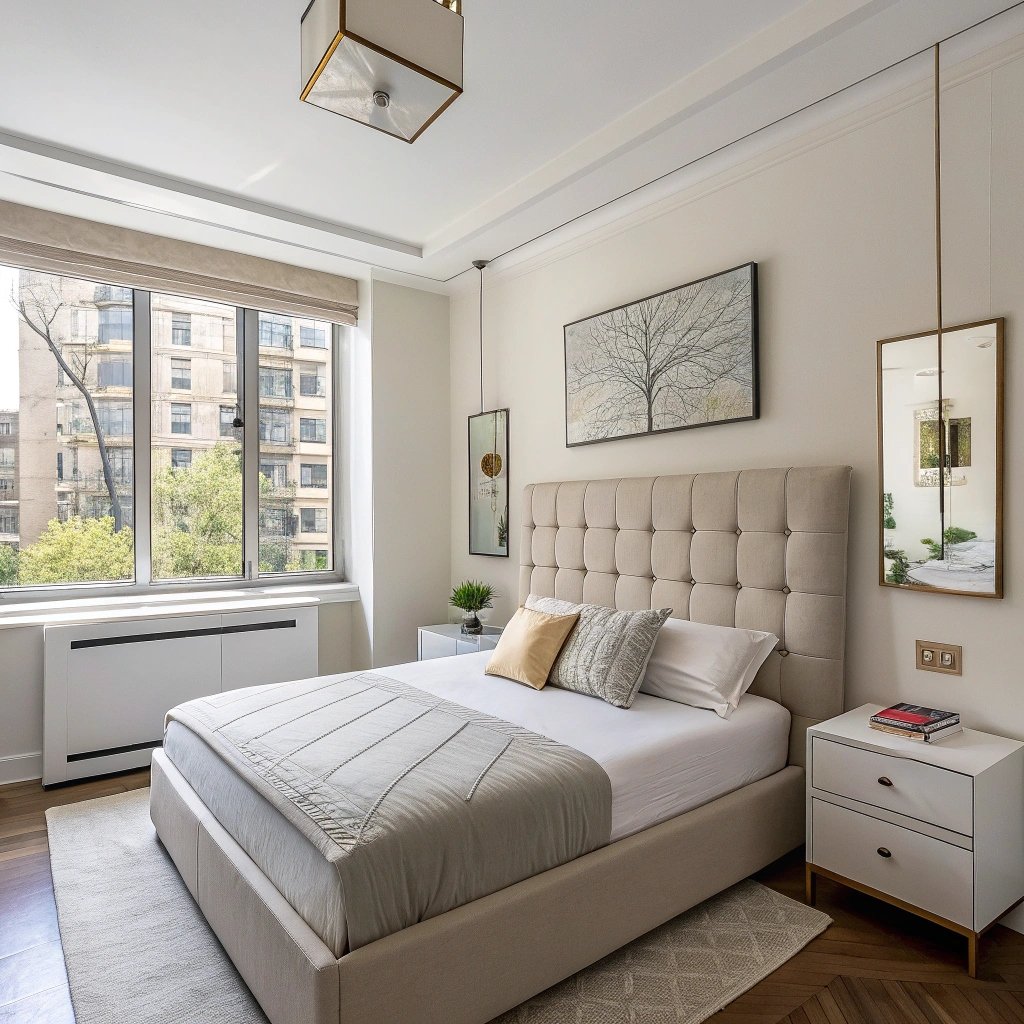
In tight rooms, scale is everything. Choose a narrower bed frame with a tall headboard to emphasize vertical lines, mount lamps on the wall to free nightstand space, and use a single art piece rather than a gallery to keep focus. A mirror opposite the window bounces light and doubles perceived width.
What makes something unique:
Specify custom-height bedside ledges instead of tables, built to the mattress height for seamless lines.
Choose sheer Roman shades inside the frame and full curtains outside to create layered depth without bulk. The result feels tailored and airy—proof that square footage is a design choice, not a limit.
11) Vintage Meets Modern
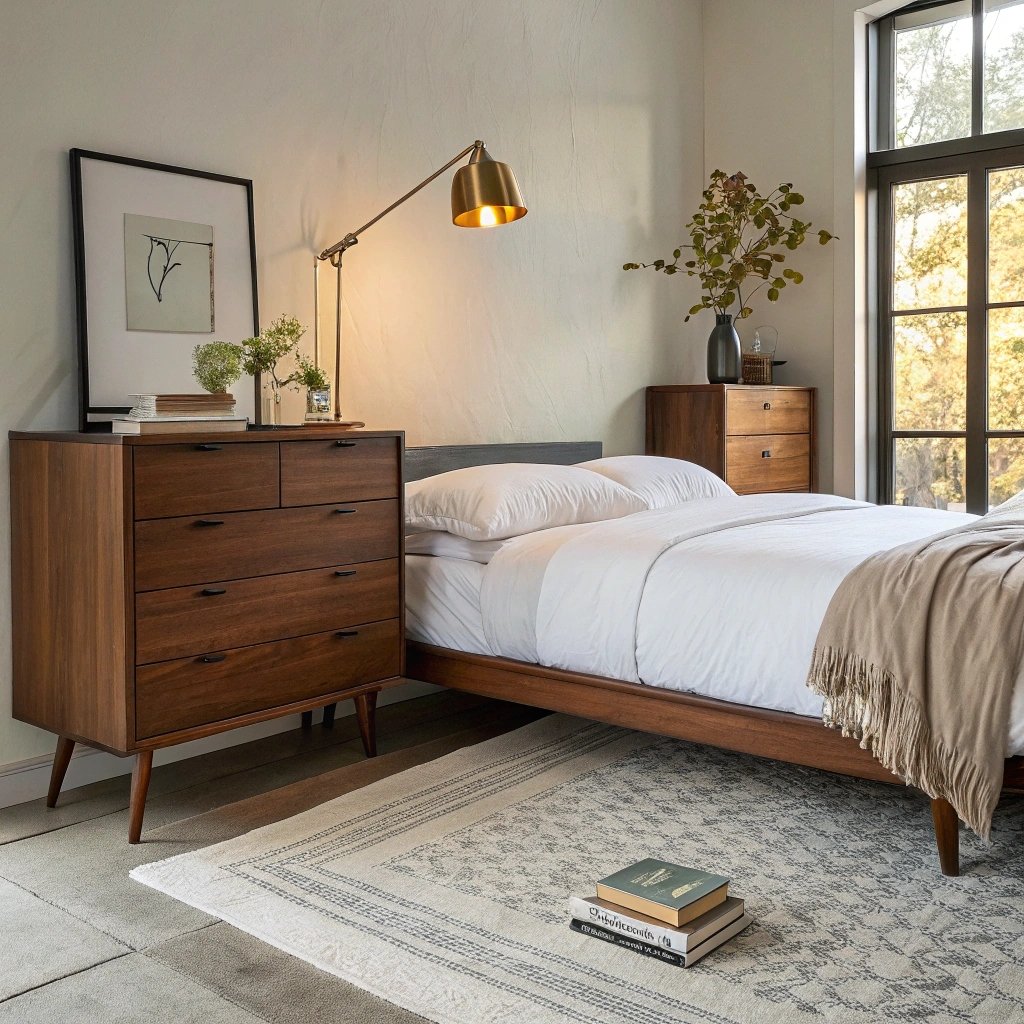
Blend a mid-century dresser or antique nightstand with modern lighting and crisp linens. The contrast gives instant character and avoids a showroom feel.
Keep the vintage piece in great condition or give it a careful refinish; pair with a streamlined bed to let the older silhouette shine against clean lines.
What makes something unique:
Echo the era subtly with one or two details—cone-shade sconce, ribbed glass lamp—rather than a full theme. Use modern hardware on vintage drawers to bridge styles.
This balance reads collected, not chaotic, and creates a timeless room that evolves gracefully with new finds.
12) Textile-First Accent
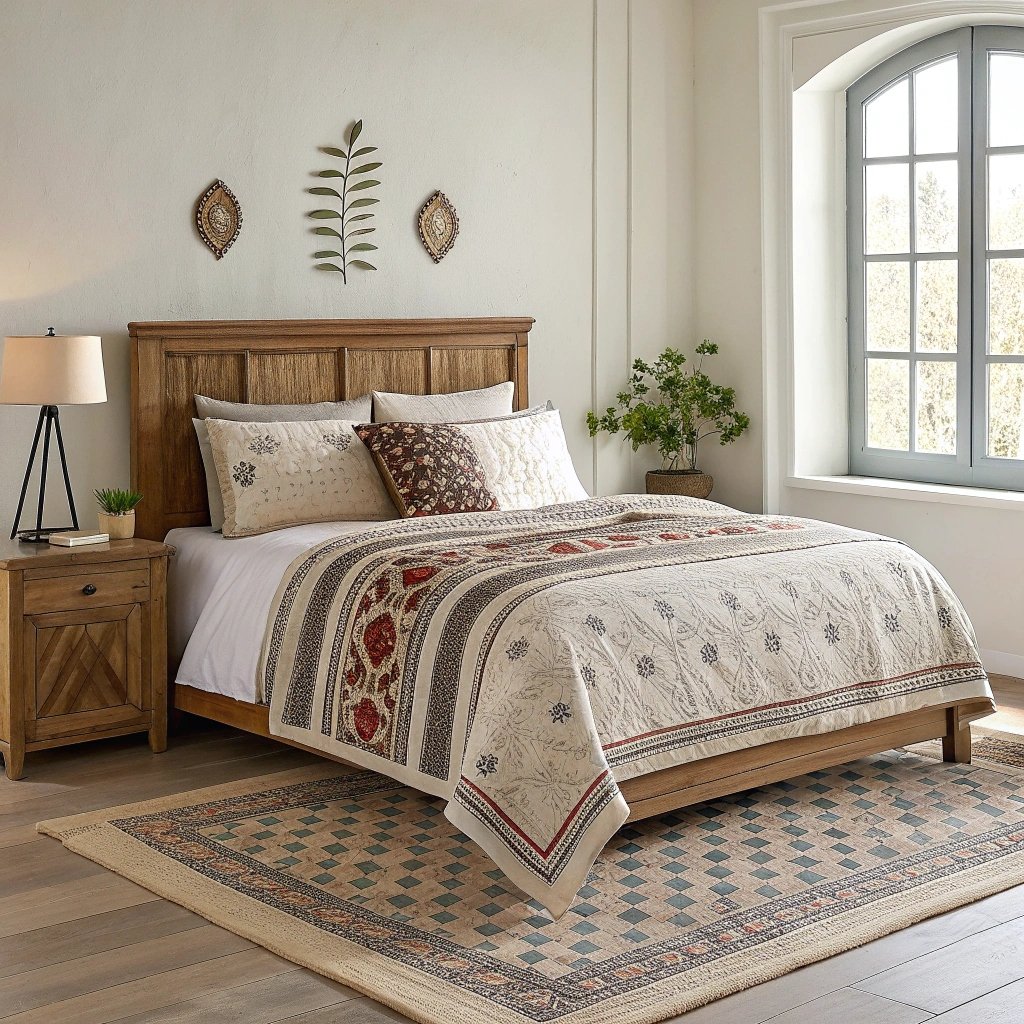
Treat textiles as the star: patterned duvet, embroidered shams, a striped or block-printed quilt, and a kilim or flatweave rug that anchors the palette. Keep furniture minimal and walls soft to let fabric tell the color story. Layer pillow sizes—euro, standard, lumbar—for dimension and comfort.
What makes something unique:
Repeat one motif across scales: a small stripe on the lumbar pillow, a wider stripe on the rug, and subtle ticking on the sheets.
Consistent rhythm keeps color playful but controlled. A tone-on-tone curtain ties the scheme together without competing with the bed.
13) Lighting Layers for Mood
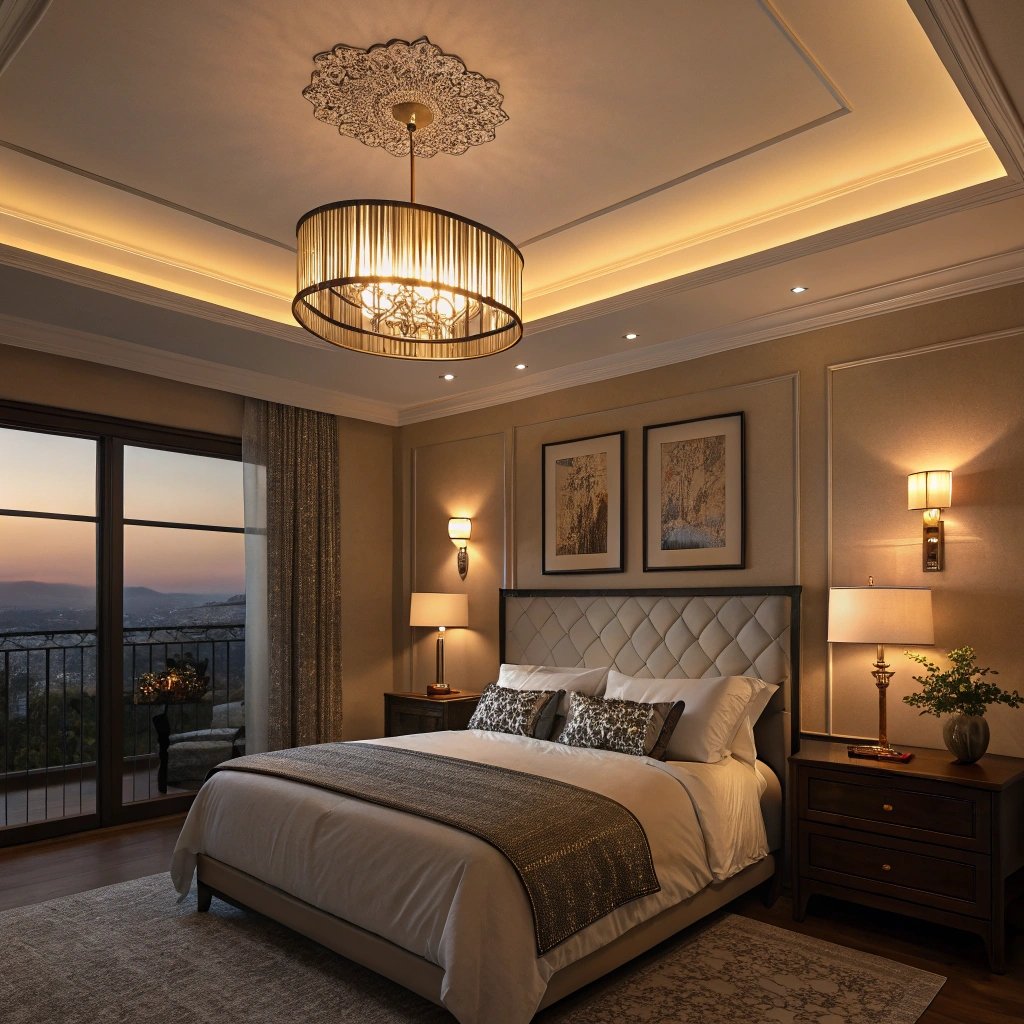
Design lighting like a living room: ambient ceiling light, bedside task lamps or sconces at eye level, and accent glow from a picture light or toe-kick under a floating nightstand. Warm 2700–3000K temperatures flatter skin and materials.
Separate dimmers and a smart plug create scenes for reading, resting, and early mornings.
What makes something unique:
Hide LED strips behind a headboard or shelf to graze the wall and visually lift the ceiling. Use a small uplight in a corner to soften shadows and create hotel-level coziness.
When light becomes part of the decor, every finish and textile looks richer—no extra accessories needed.
Quick Tips to Nail Your Room Decor Bedroom
Choose one hero move (feature wall, statement headboard, or lighting) and support it with two subtle tweaks.
Keep a tight palette so textures shine; repeat materials in small doses across the room.
Prioritize storage you can’t see—calm styling sticks when clutter has a home.

